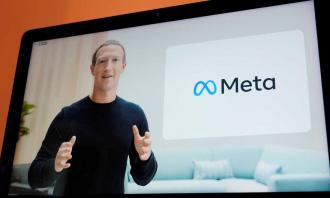

Programmatic Advertising
THE ADVENT OF DATA
If we look at the figures concerning the Internet consumption of Moroccans, we observe a multiplication of media and multimedia contacts. It is the understanding of these different points of contact that allows us to better know Internet users. And it is the knowledge of this data that has allowed the famous GAFA (Google, Apple, Facebook, and Amazon) to understand the new challenges of advertising. Indeed, today, advertising has become a market that is won not only by the knowledge of the user but especially by the ability to communicate with him.
In France, 80% of the digital advertising market is dominated by Google and Facebook. First of all, because these players manage to offer an irreproachable service or at least one that is considered as such, to advertisers and agencies that wish to broadcast their advertising messages. But also thanks to excellent knowledge of their users' habits.
It is this knowledge, this famous data, which is also called data, that tends to become more and more specialized. So much so that today, we find data available in all fields, such as the automotive industry or real estate, for example. It is thus more and more frequent to meet advertisers who are looking for value from their data. Why do they do this? Because monetizing this data allows them to reduce their marketing costs. Customer knowledge is, therefore, an excellent way to acquire new customers, but it also represents an opportunity to create new business lines.
"The practice of digital advertising is important because it allows us to have returns on investment that are important and relevant to our campaigns, we can't use it for image or awareness, but more for redirection and for conversion." Yassine Bakkari, General Manager of L'Oréal.
THE GENESIS OF PROGRAMMATIC
To understand the birth of programmatic, we need to start by remembering the state of the advertising market as it was just a few years ago. Things were extremely simple: there were publishers on one side, and advertisers on the other. Advertisers worked with media agencies, media agencies contacted publishers to buy the desired advertising space, with the objective of meeting their clients' strategy.
However, as the Internet became more democratic, the number of Internet users increased considerably, implying a clear increase in the number of pages consulted. Publishers were left with unsold advertising space. Faced with this considerable loss of revenue, a number of new technologies have emerged. This is how Ad Networks came onto the market, offering publishers a solution allowing them to market these unsold advertising spaces, on a performance basis. Which at that time meant per click.
As a result, faced with these new players, publishers quickly lost the control they had previously exercised over the rates for advertising delivered on their media. In order to address this problem, a new technological platform called Sell-Side Platform (SSP) was introduced. This new tool now allowed publishers to compete with a number of Ad Networks using similar technology, called Demand Side Platform (DSP). It is the competition of these Ad Networks that gave birth to the Real-Time Bidding (RTB) system. And this is how programmatic came about.
THE AGE OF THE MACHINES?
This new technology made an important contribution to the edifice of the advertising market, allowing players in the ecosystem to do more and more performance-oriented work. The resulting investment levels quickly created appetites in the Ad Tech world, as this technology was now generating more and more revenue for publishers, but more importantly, more and more efficiency for advertisers. A kind of phantasmagoria was therefore created around programmatic, announcing that machines and algorithms were going to take over from humans, automating the entire buying/selling process. In reality, the opposite is happening. Although the arrival of machines has allowed for a net increase in productivity, and therefore wealth, this technology, which has now been perfected, is tending to leave more and more room for humans.
"Programmatic advertising is a new media solution that allows advertisers to target with more relevance the prospects they seek to reach ... There are more and more brands adhering to programmatic advertising, after the market is still shy and the solution is not yet very developed in Morocco, especially among advertisers who are relatively fresh and new to digital." MOHAMED SLAOUI Manager CRM and Communication - Toyota
The future of programmatic and digital advertising will therefore involve a return to creativity, a return to analysis, a return to our ability to imagine and implement a certain number of media strategies and devices. The challenge of programmatic advertising now lies in our ability to put the machine at our service, rather than, as some might have feared, putting ourselves at its service.
Don't miss any news, subscribe now!
Related articles
Publications recommandées





